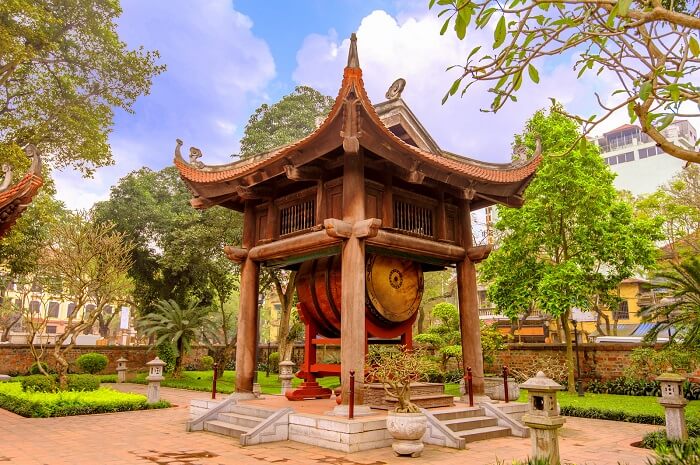Top rated holiday attractions Hanoi 2023: A must for museum fans and history lovers, Hanoi’s Vietnam Museum of Ethnology houses the extensive national collection and tells the story of Vietnam’s diverse cultures in a series of excellently well-curated exhibits. Here, the huge number of ethnic minorities who call Vietnam home are highlighted with beautiful displays of artifacts and art that showcase wooden carving, metalwork, and traditional costumes. The garden area outside the main building holds some of the most interesting exhibits. Here, you can see the rural dwellings used by different ethnic minorities across Vietnam, as well as the fascinating Giarai tomb. Discover more information on Hanoi By Locals.
Known as the lake of the returned (or restored) sword, this lake marks the historical center of ancient Hanoi. The name comes from a legend in which Emperor Le Loi was given a magical sword by the gods, which he used to drive out the invading Chinese. Later, while boating on the lake, he encountered a giant turtle, which grabbed the sword and carried it down to its depths, Every morning at around 6am local residents practice traditional t’ai chi on the shore. The lake also houses Jade Island, home of the eighteenth century Temple of the Jade Mountain. The island is reachable via the red-painted and picturesque Morning Sunlight Bridge.
Ho Chi Minh Mausoleum in Ba Dinh Square is one of the most visited attractions in Hanoi. It is the final resting place of Ho Chi Minh, the most iconic and popular leader of Vietnam, known to his people as ‘Uncle Ho’. His body is preserved here in a glass case at the Ho Chi Minh Mausoleum in central Hanoi (albeit against his wishes). For visitors, a trip to Uncle Ho’s final resting place can be an extraordinary experience as it is not just an average attraction; it’s a part of a unique history.
If Buddhists were to build a treehouse, it would likely look a lot like this. This eleventh century temple was built by the emperor in gratitude for finally being blessed by a son. The temple was meant to look like a lotus flower blossoming from a single pillar in the pond, similar to the one seen in the prophetic dream of a child that this emperor had received. Inside, there is a small shrine to the Bodhisattva of Mercy. The current structure is a rebuild, as the French had the first destroyed after their retreat from the country.
The city’s most interesting religious building is this beautiful and incredibly peaceful Confucian temple, originally built as a university in the 11th century. Today, the Temple of Literature stands as a tribute to the nation’s scholars. It was here, in the medieval era, that the philosophy of Confucianism and literature was taught, and near the entranceway, you can still see the names of students who studied here, etched into a series of pillars. Inside, a series of manicured gardens lead to pavilions and a well-preserved pagoda where a statue of Confucius sits. Read extra details at https://hanoibylocals.com/.
The Imperial Citadel of Thang Long, is an intriguing relic of Vietnam’s history and, signifying its historical and cultural importance, was made a UNESCO World Heritage Site in 2010. Also known as the Hanoi Citadel, many artefacts and items dating back to between the 6th and 20th centuries were excavated in 2004, including foundations of old palaces, ancient roads, ponds and wells, bronze coins, ceramics and pottery from China and many places in Asia. The ancient site was the political centre of the country for 13 consecutive centuries and served as the capital of Vietnam for eight centuries. A notable attraction in the Imperial Citadel of Thang Long was the Hanoi Flag Tower, a renovated 40-metre-tall stone fortress offering expansive views of Ba Dinh Square and Hanoi City Centre.
